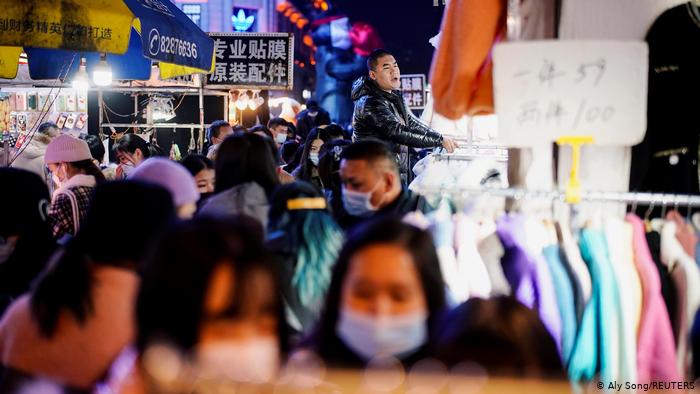The spike in China’s economic activity is no surprise, thanks to the base effect and the seasonality factor. However, the metric we are watching is the fixed asset investment level, given Beijing has made it clear it would not tolerate any further asset inflation.
There are also glimpses of China’s long-term growth ambitions focused on quality, rather than quantity, with employment and environmental issues taking centre stage in its post-pandemic growth plan.
Headline figures for fixed asset investment, industrial production, and retail sales have all been boosted by comparisons with the very low base in Q1 2020, jumping by over a third in Jan-Feb from a year ago. Yet this could also mark the peak of the rebound, as signs have emerged that policymakers could gradually reduce stimulus, rein in credit and keep policy rates stable.
Read more: China consolidates comeback with upbeat industrial, retail data
Whilst the YoY growth rate of retail sales jumped to 33.8% in January-February, it has only expanded 6.4% compared to the same period in 2019, giving an average YoY growth of 3.2% over the past two years.
Similarly, the surge in headline industrial output in the first two months halves to 16.9% when compared with pre-pandemic data in 2019, and has to be seen in the light of the fact that this year millions of workers who normally travel home over the Lunar New Year holiday did not leave work this year because of the virus. This has kept factories humming and also lifted consumer spending.
Similarly, this year the monthly retail sales over the Chinese New Year holiday in February failed to outperform, with a nearly flat 0.56% growth compared to Jan 2021.
While all key activity indicators are likely to have been heavily distorted by last year’s low base, recent policy rhetoric remains cautious, with signs that sustained accommodative monetary policy may have fuelled financial risks.
POST-PANDEMIC BUFFER
That said, the recent rebound in credit data alone may not be enough to change the current accommodative, yet stable, monetary policy rhetoric. As reflected in the NPC meeting this month, Beijing is not in any rush to exit accommodative monetary policies. Rather, it reiterated the importance of ensuring policy continuity to provide a buffer against any uncertainties in the first year post the pandemic – the opening year in the 14th Five Year Plan.
Monday’s data release showed that industrial production surged in the first two months of the year, mainly on account of automobiles and micro-processor production. This is a reflection of Beijing’s green ambitions in the run up to this year’s “Two-Sessions” meeting, where China was more vocal than ever on environmental issues.
Automobile production follows policy that has fostered a transition to e-vehicles from internal combustion engines, while chip shortages have driven the production of micro-processors.
As the nation transitions to carbon neutral status by 2060, financial institutions have been given the chance to lead the charge with collective actions that support Beijing’s detailed reduction plans of energy consumption and carbon emission.
GREEN PROJECTS
Since Q1 2020, the PBoC has been encouraging policy banks and state banks to apply preferential lending to green projects, or issue carbon neutral bonds to finance ESG and sustainable projects both domestically and abroad.
As ESG becomes a mainstream investment theme, especially in Europe, global investors are increasingly interested in yuan denominated green bonds given their long maturity and attractive yields. With this long-term energy transition roadmap for the next five years and beyond, this will likely give an additional boost to China’s green bond issuance in the coming months.
In this year’s government work report, Beijing has set a new quantitative target of 3% reduction in energy intensity – a ratio measuring energy inefficiency of an economy by calculating units of energy consumption per unit of GDP- by year-end. The government also plans to reduce energy and carbon intensity by 13.5% and 18% respectively over the next five years. These are all steps in line with the plan for China’s carbon emissions to peak by 2030 and for the country to become carbon neutral by 2060.
As China transitions to a dual circulation economic strategy, emphasis on growth through exports is being bolstered by a focus on domestic demand. A consumer spending lift can only be sustained if livelihoods are improved and jobs are created.
JOB CREATION
It is with this purpose that employment was a priority featured at this year’s “Two Sessions” agenda. The 11 million new job creation target will be challenging given the record number of 9 million university graduates seeking employment. Despite a seemingly modest 6.0% growth target, policies to promote employment started last year – fee cuts and subsidies for companies, encouraging state-owned companies to hire more workers – will continue.
It’s worth noting that Beijing’s decision to keep up an explicit GDP growth target was mostly for the purpose of anchoring market expectations on China’s post-pandemic recovery, and to give room for policy manoeuvre amidst ongoing global uncertainties.
But for the policymakers in Beijing, it is the quality of growth that is the focus rather than this specific target.
- Jinny Yan is Chief China Economist and Helena Huang is a China Economist at ICBC Standard Bank Plc






















